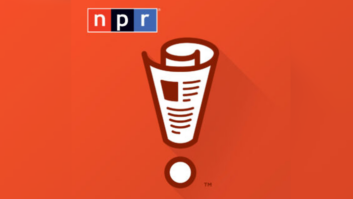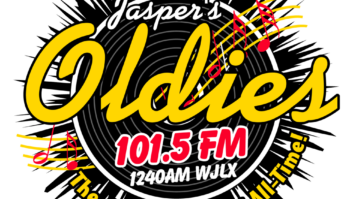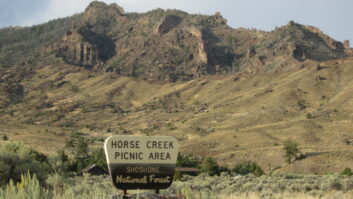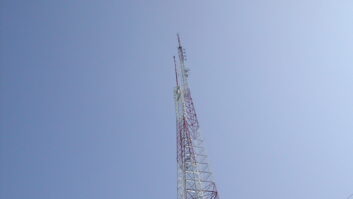What will U.S. broadcast radio look like in the future?
That’s a common theme in our pages. Sometimes, though, it’s fun to look back at what people thought it would look like today.
In a 1999 supplement about transmission technologies, I asked writer and engineer Mario Hieb to talk to industry experts and have them to peek into their crystal balls to predict industry changes five years down the road. Now that the fifth anniversary has passed, let’s review what they said. Then tell me how you think they did and what you think radio will look like five years from now. Maybe I’ll quote you in 2011.
Many thanks to the folks who fearlessly offered predictions, knowing these might come back to bite them. (Job titles refer to 1999.)
Mario Hieb, CPBE, consultant and chief engineer of KXRK(FM), Salt Lake City -“Forget Y2K. What will AM and FM be like in the year 2005? … We’ll have even better buzzwords, like desktop broadcasting, virtual FCC inspection and OFEAS (Operator Friendly Emergency Alert System).”
David J. Grace, president and CEO, Nautel Ltd. – “Conventional AM and FM will still be a major medium in many countries around the world because of receiver cost. In highly developed markets there will be early and rapid adoption of digital audio via IBOC systems by the larger broadcasters.
“IBOC success in the U.S. will lead to demand by other countries and in some cases, it may coexist with the Eureka-type systems.”
Tom Osenkowsky, consultant and RW contributor – “I envision a mostly digital broadcasting environment for radio broadcasting. Some form of DAB will be in place and most stations will have a digital audio path.
“Consideration will be given to redefining AM and FM coverage due to the marketplace changes since tower sites were chosen in the distant past, where cow pastures have given way to urban sprawl.”
Larry Wilkins, CPBE, assistant director of engineering, Cumulus Broadcasting, Montgomery, Ala. – “To say that in the coming years digital will be the normal mode of transmission is no surprise to anyone. However, the things that digital transmission allows a station to deliver is another story.
“Whether it is IBOC or some other form of digital transmission, stations will be able to transmit multiple programs. These may be from their own operation or from a subscriber, much like SCAs are used today.
“Another item I see on the horizon is the ability of stations to operate in a ‘cellular’ fashion, using several smaller-powered transmitters instead of one high-power plant to cover the market. This has already started in a few markets.
“On a down note, the shrinking engineering population will continue to get worse. If the ideas above do make it, who will be around to install and keep it up?”
Clay Freinwald, facilities engineer, Entercom-Seattle – “From the amount of investment I have been seeing around here in analog AM and FM RF systems I’d have to say that there is a whole lot of money being bet on there not being very many changes! In this market alone we have three new FM master antenna combiner systems, about 10 new FM transmitters and in the world of AM we have a major diplexed directional array under construction in town.
“Not too sure that we will have the IBOC battle solved by then. If history is any teacher – and it ought to be – five years from now we will be damned lucky if the transmission system battle is over. Then it will be time for the battle of the set makers. Still sounds like technology that is being driven by technology, and not by public demand. It would not be the first time for that concept to take root in this country!
“DAB may well have found its niche, but it will remain just that. Americans are in love with local radio, and local radio delivers. If radio broadcasters really wanted to do something for themselves they would have been battling for a requirement that all cars have diversity receiving capabilities. Already a receiver maker has taken this one step further with a ‘high IQ’ receiver.”
Geoff Mendenhall, P.E., vice president of advanced product development for Harris Corp. Broadcast Systems Division – “By the year 2005, the conversion from analog to digital radio broadcasting will be well underway in the more developed countries. The complete conversion to all digital broadcasting may take up to 20 years, or more in some parts of the world.
“Many of the AM and FM broadcast signals worldwide will carry a digital component in 2005. In many parts of the world where there is additional RF spectrum available, fully DAB services will be implemented. IBOC digital audio broadcasting will be widely implemented within the existing AM and FM broadcasting bands in the United States and other countries with limited spectrum allocations.
“The ability to offer new revenue-producing broadcast data services will drive the broadcasters to make the investment to convert to digital radio broadcasting. Consumer demand for these new data services will build, and the consumer radio receiver manufacturers will respond with low-cost digital radios. Some radio broadcasters may forsake high-quality audio programming as their primary service by narrowing the bandwidth dedicated to audio and maximizing the bandwidth available for other revenue-generating services.
“Analog AM and FM radio stations will be competing for listeners with other venues including: direct-to-listener satellite radio, cable radio, Internet radio using MP3 or similar compression technology, IBOC digital audio broadcasting, EU-147 DAB, IP-based radio over new mobile radio or cellular services such as 3G audio services within the DVB-T Multiplex, and analog ‘micro radio’ stations.
“Terrestrial radio broadcasting will survive in the face of competition from these other venues because only local, terrestrial radio can reach the mobile audience with local traffic information, news, weather etc. The current trend of group owners to use satellite-distributed programming which reduces local content, will have to be reversed in order for the local terrestrial services to once again differentiate themselves from other services that cannot deliver as much local content.
“The broadcast studio will continue to evolve in two areas: software and controller hardware. A computer will store audio, download it over the Internet, edit it and play it into a console for mixing, routing and switching it to a variety of transport mediums. These will include the Internet, the traditional RF channel, a new digital channel or a completely new medium. Program audio will be transported digitally over both RF and telco links. Concern over cascading algorithms – and the lack of a standard – will cause broadcasters to continue to drive toward uncompressed audio storage and transport.
“Fortunately, due to continually falling bandwidth prices and cost storage, the drive to uncompresssed storage and transmission will become more and more affordable.
“The technologies used in the design of AM, FM, IBOC, DAB and DTV transmitters will merge into a largely common architecture. All of these different types of transmitters will utilize a form of vector modulation that requires linear amplification. Manufacturers with high expertise in RF modems, digital signal processing, distributed control systems and linear amplification will become the leading broadcast equipment suppliers.”
How’d they do? Want to make a prediction about 2011? Write to me at [email protected].












